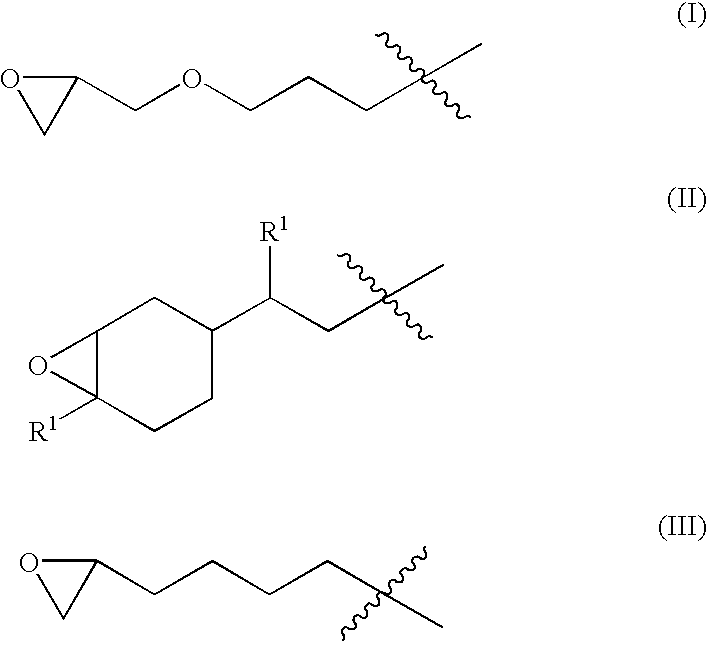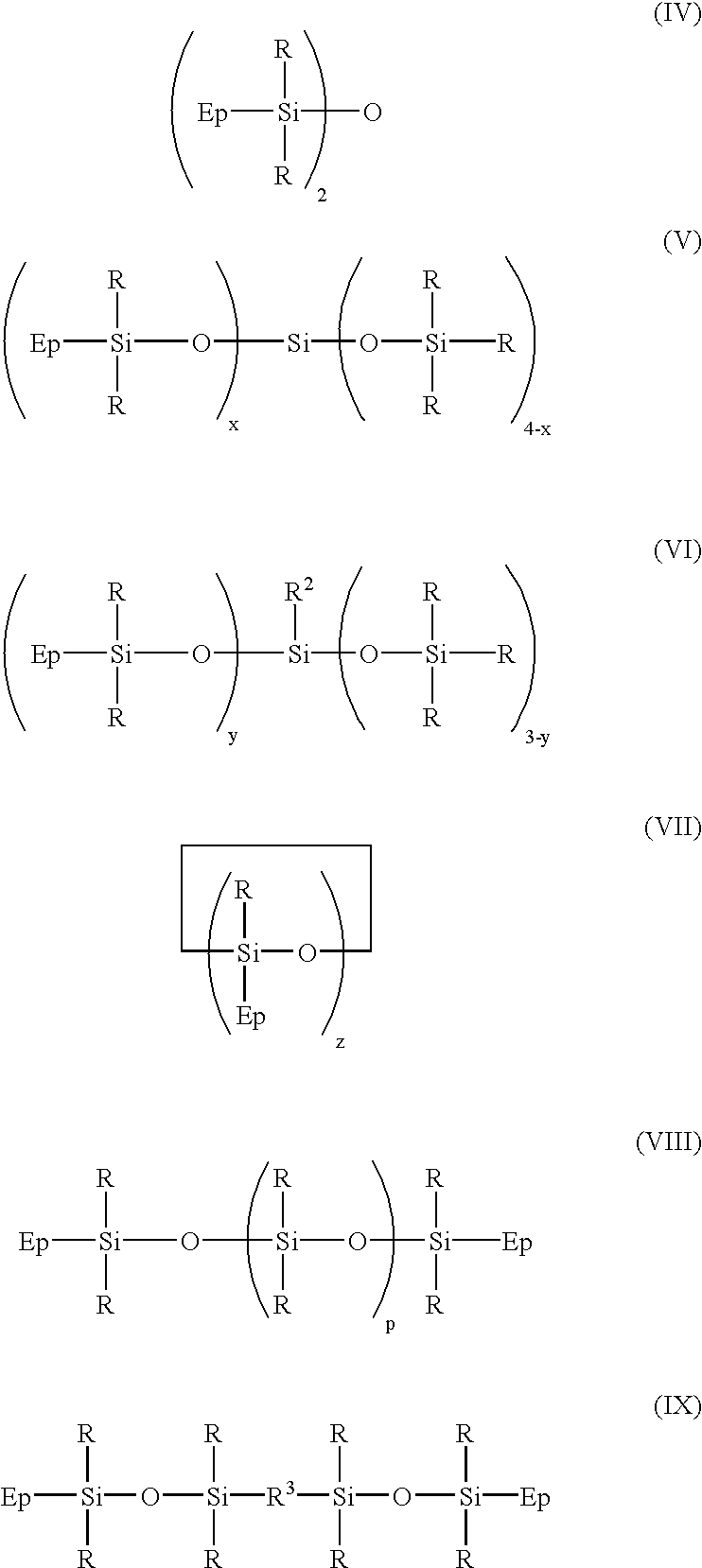Composition comprising silicone epoxy resin, hydroxyl compound, anhydride and curing catalyst
a technology of epoxy resin and compound, which is applied in the direction of plastic/resin/waxes insulators, semiconductor/solid-state device details, display means, etc., can solve the problems of poor thermal aging stability, common packaging materials that often undergo a gradual loss of optical and mechanical properties, and devices that exhibit special packaging needs, etc., to achieve better match between the two refractive indexes, increase the amount of light emitted, and increase the refractive index
- Summary
- Abstract
- Description
- Claims
- Application Information
AI Technical Summary
Benefits of technology
Problems solved by technology
Method used
Image
Examples
Embodiment Construction
1-3
Epoxy resin encapsulants were prepared by combining the various epoxy-comprising resins, curing agents and other components as shown in Table 1, and curing under the specified conditions. All quantities are in parts by weight. The abbreviation "RT" means room temperature. The composition of Example 3 also contained 0.08 wt. % of a hindered phenol stabilizer and 0.08 wt. % of a phosphite stabilizer. 1,1,3,3-Tetramethyl-1,3-bis[2(7-oxabicyclo[4.1. 0]hept-3-yl)ethyl]disiloxane was employed as silicone epoxy resin. The hydroxyl-containing compound (B) was a hydroxyl-containing silicone resin comprising the hydrolysis product of a mixture of phenyltrichlorosilane, methyltrichlorosilane, and dimethyldichlorosilane.
The values for initial % transmission at a wavelength were measured on 5 mm thick specimens. The values are shown in Table 2.
A composition of the invention (Example 3) shows improved initial transmission especially in the near UV region of the spectrum (about 400-450 nm) comp...
PUM
| Property | Measurement | Unit |
|---|---|---|
| temperatures | aaaaa | aaaaa |
| temperature | aaaaa | aaaaa |
| temperature | aaaaa | aaaaa |
Abstract
Description
Claims
Application Information
 Login to View More
Login to View More - R&D
- Intellectual Property
- Life Sciences
- Materials
- Tech Scout
- Unparalleled Data Quality
- Higher Quality Content
- 60% Fewer Hallucinations
Browse by: Latest US Patents, China's latest patents, Technical Efficacy Thesaurus, Application Domain, Technology Topic, Popular Technical Reports.
© 2025 PatSnap. All rights reserved.Legal|Privacy policy|Modern Slavery Act Transparency Statement|Sitemap|About US| Contact US: help@patsnap.com



